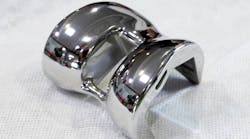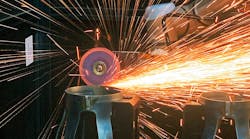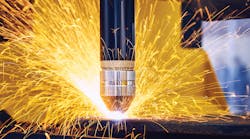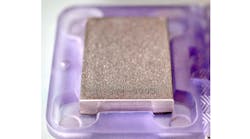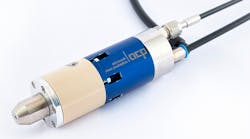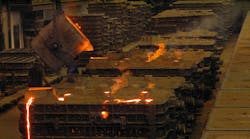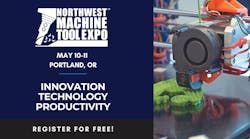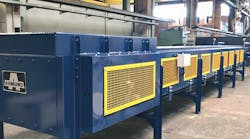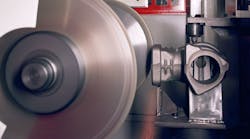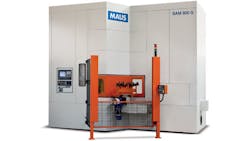One of the great challenges facing most foundries is how to staff the cleaning room to meet daily production volume and product quality demands, while maintaining profitability. Castings have to make it past the cleaning room before they can be shipped and invoiced, but under current economic and social conditions this continues to be a tremendous bottleneck for many foundries. As societal norms and manufacturing standards continue to change, it becomes more difficult to find individuals who want to work in the cleaning room while government regulation makes it even harder to keep the cleaning room open.
If you are lucky enough to have the proper personnel available, there are constant battles with absenteeism, failed drug screens, work-environment concerns, a high rate of injuries and workman’s compensation, etc. Foundry managers across North America know well that cleaning room staffing can be the most challenging part of their job, and it directly affects the profitability of the company. It is a dilemma for the executive level and human resource departments of foundries, too.
Whether you operate a high production foundry or a job shop, automatic grinding technology may be the answer to all these issues, and may increase profitability levels, too.
For many years automatic grinding was a solution that only high-production shops could consider, because of the consistency of the sizes and types of castings they produce. Now, the technology has advanced to allow job shops to take advantage too. Suppliers have responded to the needs and desires of foundries with upgraded systems that are more user-friendly, reliable, flexible, and versatile. Adaptations to the equipment and technology over the years now allow very quick change-overs, ease of operation, simplified off-line programming, lower maintenance, and shorter cycle times.
But, even with all these technological advances the big hurdle for most foundry operations remains the justification of the capital cost of automatic grinding equipment, the dreaded Return On Investment (ROI.)
ROI quantifies the value of your automatic grinding investment; it’s a figure that can turn the subjective discussion into an objective decision, and organizational uncertainty into support for the investment. Simply put, the ROI quantifies how to measure the value of a particular investment versus other investment options. It can indicate how, as a result of the investment, you can improve your production cost, product quality, etc. For example:
Foundry A currently produces a casting for $200. One quarter of that is material cost ($50), one quarter is overhead ($50) and one half is total labor cost ($100.) It takes one hour to grind the casting manually at $50/hour labor cost, so the cleaning room time is half of that total labor cost ($50.) If automatic grinding equipment can reduce the cycle time by a conservative 50% ($50/2=$25), the total casting cost is now reduced to $175, and Foundry A has the opportunity to double production because it has reduced the cleaning room time by 50%, too. If the current production volume is 40,000 pieces/year of this casting, and the automatic grinding machine costs $400,000, the simple ROI calculation on this project might look like this:
(Additional Earnings) [40,000 pcs. x $25] – (Initial Investment) $400,000/(Initial Investment) $400,000 = 1.5
This ratio acts as a financial tool that quantifies how long it will take the equipment to pay for itself. In this case, the equipment will be paid for and generate additional revenue in less than one year. This would make it an excellent investment, considering the short pay-off time and we have not factored in the additional revenue received from being able to increase production, savings from reductions in manpower and scrap or lower insurance costs. This can be a cost-effective solution that resolves multiple problems for a foundry under the current economic, social and environmental climate.
Even smaller or mid-sized foundry operations that do not have the investment budget available to purchase automated grinding technology may use leasing option to take advantage of this technology. Because the true value of automatic grinding equipment comes from its use, and the equipment will increase productivity and reduce costs immediately, it is advantageous to enjoy these benefits as soon as possible. Lease payments can be made very manageable with a six- or seven-year term (the equipment life is well beyond that time frame), and it is very easy to justify this as a monthly operating expense as well. Leasing the equipment also offers the benefit of conserving the foundry’s working capital and lines of credit, along with the option to own the equipment at the end of the lease, or the ability to upgrade to the newest automatic grinding equipment/technology available at that time.
In a similar example, a small job shop could lease the same $400,000 automatic grinding system on conservative five-year contract, for about $7,500/month. Suppose this operation is producing castings of various sizes, with eight-man cleaning room staff and an average cycle time of 4 minutes. If the foundry cut the cycle time by just 25%, it is easily possible to increase production by 25%, as well as reduce the cleaning room labor costs by 25%, and/or perhaps operate with two fewer people in the cleaning room. This could be justified by paying for the cost of the monthly lease from the decreased monthly operating expenses and increased production revenue.
Modern automatic grinding equipment has advanced to the point that both the high production foundry and job shop, larger or small, can benefit from the investment. The new technology has many user-friendly features that allow quick changeover and job set-up, easy off-line programming, low maintenance costs, process flexibility, and shorter cycle times. It may not be as cheap as aspirin, but it will pay for itself quickly and increase profitability while eliminating many of your daily operating headaches.
Tim Butler is sales director for Palmer Maus North America. Visit www.palmermaus.com
